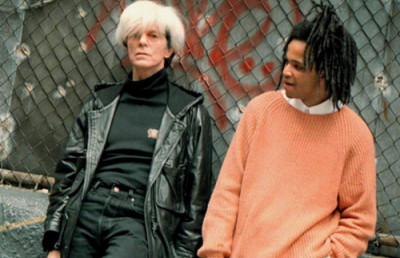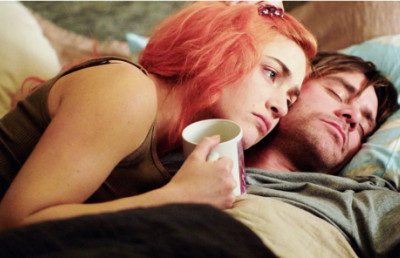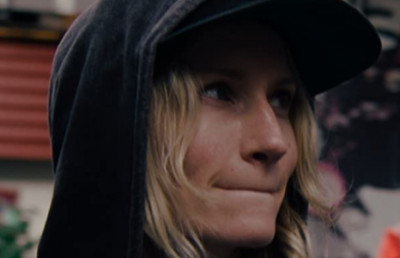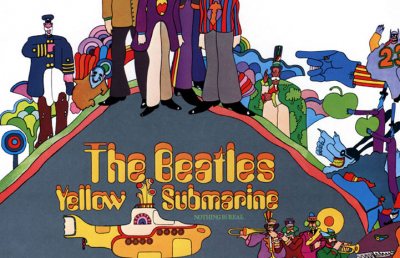Transgressing the Frame: Onscreen Art Between Form and Formlessness
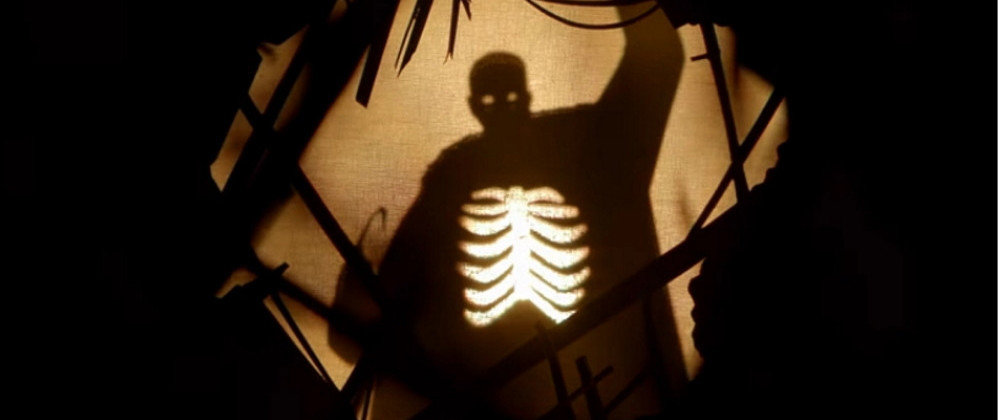
“Critique is so limiting and emotionally draining.”
Velvet Buzzsaw (2019)
“If, cruel, it does not invite us to die in ravishment, art at least has the virtue of putting a movement of our happiness on a plane equal to death.”
Georges Bataille, “The Cruel Practice of Art”
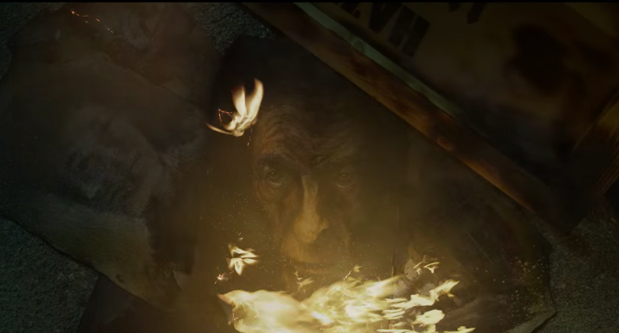
Ventril Dease’s art destroying itself in Velvet Buzzsaw (2019)
FORMAL TRANSGRESSION
Boundaries between art and life dissolve through formal slip – a splatter of red paint across a gallery wall, a painting convulsing its edges, a drawing burning itself, a Rembrandt painting becoming-portal. The still-intact frame, gets transgressed as artworks and the frightening-ecstatic zones they set-up exit the closed economy of utility, accrual, and preservation and enter the general economy where heterogeneous, sacred, and potentially horrifying elements exist. The general economy contains what cannot be easily subsumed or calculated, what routinely gets cast out as monstrous or low. Economized intermediaries (artworld, museum, marketplace) are rendered defunct in the face of an outside force, form-destroying. Here, I’ll talk about Velvet Buzzsaw (Dan Gilroy, 2019), Candyman (Nia DaCosta, 2021), and The Stendhal Syndrome (Dario Argento, 1996), not in order to show how the films themselves function (or not) as effective artworks but rather to figure how certain artworks transform into subversive images as they de-form, becoming sites for and engines of horror.
Speaking about Georges Bataille’s interest in subversive images that induce both agony and ecstasy while also troubling stable form, Benjamin Noys writes:
The impossibility of the subversive image is that it does not fit into the frame but spills over it. The formless is always in-form, but it is never absorbed by that form. The subversive image as the impossible is a reading that reads this mobile disruption of the frame of the image.
Static artworks are delivered from fixity and into deranging mobility as they alter the relationship between viewer/viewed, consumer/consumed. A painting that exceeds its frame. A mirrored installation for summoning the dead. A series of killer artworks, porous and mutilating where painting becomes a passionate threshold, mirror, shield, portal.
NON-PLACE
Museums and galleries often feel like non-places: slick and bright consumption-oriented arenas to pass through. Velvet Buzzsaw (2019) and Candyman (2021) are both set in urban artworlds. Horror arrives when something from the outside (in Candyman, the Candyman himself and in Velvet Buzzsaw, the cursed/haunted artworks of the deceased artist Ventril Dease) enters the upright economized artworld, thrilling and vicious.
Velvet Buzzsaw opens at Art Basel, the camera following famous Los Angeles art critic Morf Zandewalt through the fair. The hit of the fair is an installation of a giant mirrored sphere with holes which viewers may explore with their hands and arms as sensors create various visceral sensations. Rhodora, a blue chip gallerist, describes the piece as being about sex and desire and Morf says it makes him feel as if he’s tapped into a kind of primal consciousness. Rhodora purchases the mirrored sphere for her gallery for seven million dollars.
Josephina, Rhodora’s assistant, finds the dead body of a reclusive and unknown artist living in her building and wanders into his empty apartment where she finds, then takes, slews of violent and visionary drawings and paintings into the gallery despite the fact that the artist, whose work has never been seen by anyone, demanded it be destroyed upon his death. When the art enters the gallery, the staff and those in close proximity to the work begin to change. The film parodies the narcissism and spiritual barrenness of the certain pockets of the commercial artworld. Morf the critic is searching for something like mystical experience or transcendence in these spaces: “This is my life. How I connect with some spirituality…I further the realm I analyze.”
INTENSIVE FORMS OF LIFE
In The Birth of Tragedy, Nietzsche speaks of Apollo and Dionysus as two Greek gods who spin art in disparate but always-linked ways. Nietzsche likens the Dionysian to the dark screen onto which Apollo, the form-defining god of sculpture, projects his structures. The Dionysian, an always-transmuting and excessive energy, stretches forms to their limits and dissolves demarcations between self and other, art and world. Nietzsche offers instructions for how to summon this intoxicant: “…let your imagination conceive the multitudes bowing to the dust, awestruck—then you will approach the Dionysian.” From this overfullness, pain begets joy. Dionysian dissolution shatters and makes possible Apollonian forms.
Art and death are both intensive forms of life for 20th century philosopher Georges Bataille, who thinks intimately with Nietzsche-Dionysus. These intensive forms of life often appear as form-destroying during what Bataille names the sacred instant. One is granted access to that hard-to-grasp force (Dionysian, formlessness, ecstatic revelation, loss of self, horror…) As the subversive image overflows its frame, a movement opens onto the outside. A flash of the unknown, unnamable appears. The subversive image is an engine for loss, an excess that offs itself as formal fixity and firm boundaries dissolve, shuddering the instant into wordless horror. In The Forms of the Affects, film theorist Eugenie Brinkema wonders “whether horror is the genre in which the body is formalized, given textual shape only to be subjected to the bare destruction of its form.” This is the case in Velvet Buzzsaw, Candyman, and The Stendhal Syndrome, where forms (human bodies and art) are shaped and then inventively altered. The art, which escapes its frame, seeps into the filmic worlds where transformation and mutation at beauty’s knife-edge spasms.
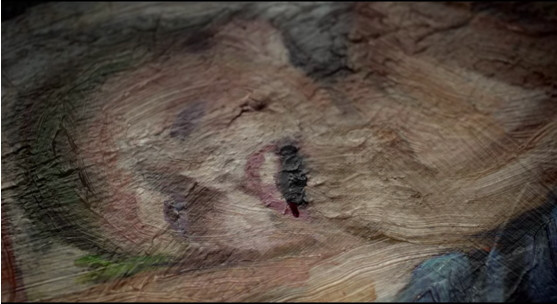
Ventril Dease’s bleeding art in Velvet Buzzsaw (2019)
BLEEDING PAINT
When Ventril Dease’s art begins to bleed, move, and kill, critique feels futile as the work becomes both intoxicant and contagion, porous and alive and morphing whatever’s around. At the opening, this new art ravishes:
Demand has people ready to kill.
Before the sublime the whole body quivers.
It cuts through the bullshit and gives form to true emotion.
DAMN.
Auto-mutilating, the paintings destroy themselves and those that facilitate their circulation, beginning with the art installer. The madness, sublimity, and violence that is the artwork’s engine gets literalized as what the artworld sets aside in order to function smoothly moves to the center where it catastrophizes the marketplace, violently mediating interactions between the characters. Those orbiting the work get infected/enchanted by its maddening light, bedazzled and shocked awake. One by one, the characters die by Dease’s art, which was never meant to be displayed or seen, as it escapes its frame. What relation does the artworld have to the world? Art to the artworld? Morf wonders: “There is some sort of larger power, some entity invested in our endeavor…have I gone mad?”
Formlessness operates as momentary release from form, an uncapturable ecstatic maneuver. Vetril Dease’s paintings move the formerly sanitized non-places of the artworld into the realm of the intimate, sacred, and contaminated. The paintings, enchanted, seem to sacrifice themselves, hurling their moving images (and those who seek to sell them) out of the closed economy of exchange and utility and into what Georges Bataille calls the general economy without reserve whose forces are sacred, not saleable, ecstatic, not calculable, and de-forming.
DEFORMING MIRRORS
The legend says that if you look into any mirror and say “Candyman” five times, he’ll appear in the mirror and kill you with his hook-hand. Candyman was an artist and the son of a slave who was tortured, covered in honey, swarmed by bees, and killed after having an affair with a wealthy white man’s daughter in the 19th century.
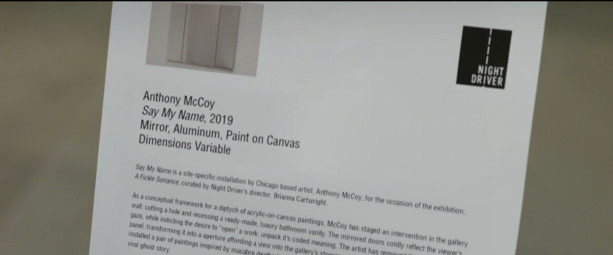
Anthony McCoy’s Candyman art installation in Candyman (2021)
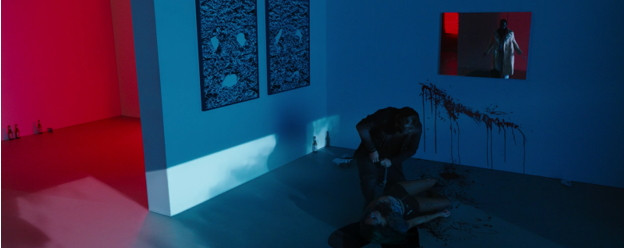
Candyman conjured in the art gallery mirror in Candyman (2021)
Candyman (2021) builds on Candyman (1992) and follows Anthony McCoy, a young artist working on a project about Cabrini-Green, the housing project where Candyman is said to reside and where the first film is set. Like Helen Lyle in Candyman (1992), the deeper Anthony delves into his research, the more the legend subsumes him. While taking photographs in a field, he gets stung by a bee. His gradual and dramatic form change acts as the film’s backbone. The wound from the bee sting spreads and forms porous and decaying abrasions which transmute Anthony from the outside-in into the Candyman himself. This is also the painful and infectious process of Anthony becoming-artist, as his creative block disappears. As the wound festers and spreads, he paints the Candyman legend in frenzied and possessed bursts in his studio.
At a group art show, Anthony presents a mirror with instructions for how to summon Candyman. Like the mirrored sphere which is said to induce primal consciousness in Velvet Buzzsaw, the mirrored installation in Candyman is both mirror and portal. It shows the smoothly economized aesthetic experience and also speculates and reaches toward some primal consciousness.
Candyman deals with gentrification, racism, and urban legend – the past breaking in to remind the present of the horrors it papers over. Anthony grew up in Cabrini-Green, the housing project haunted by the Candyman, and was kidnapped by Candyman as a baby – a fascinating bridge from Candyman (2021) to Candyman (1992) that the film glosses over. Here, Candyman is no longer a villain, but “that which had to be created in order to cope with immense violence against black people.” The most formally transgressive moments happen when artwork gets decimated and changed: a line of blood splatters across the gallery’s white wall below the mirrored installation, the Candyman visible in the work of art but not in the room itself. Mirror/artwork becomes window/door to the outside. The line between blood and paint, real and unreal, blurred.
THE STENDHAL SYNDROME
In Saving Beauty, Byung-Chul Han argues that an aesthetics of smoothness dominates our contemporary culture, highlighting Jeff Koons’s work as the embodiment of “perfect and optimized surface without depth or shallows” like our smartphones, delivering quick seamless streams of information. A demystified world where everything, art included, is meant to be “available for enjoyment and consumption.” Han argues that social media, narcissism, and much contemporary create an echo chamber: “Art opens up an echo chamber, in which I assure myself of my own existence. The alterity or negativity of the other and the alien is eliminated altogether.” In both Candyman films, the mirror is a site for speculation, imagining, and destruction. The mirror, no longer a site for self-confirmation, destroys, forecasts, and opens.
In his analysis, Byung-Chul Han invokes Medusa, the deranged saint of arts and artists, when talking about contemporary art, which he says largely “lacks entirely the fear-inducing gaze of the Medusa which petrifies everything.” To look directly at Medusa, a creature from Greek myth with the hair of unwieldy and venomous snakes, is to get stunned, turned to stone. In The Stendhal Syndrome, when Anna Manni is first overwhelmed by the art which surrounds her in the Florence museum – operatic and dizzying – Caravaggio’s shield with the head of Medusa is present and for a vertiginous moment, takes up nearly the entire frame. Caravaggio famously used his own face as the model for Medusa’s. A trick/tincture: he shielded himself from her violence by becoming her. I want to suggest that this momentary glimpse of Medusa’s/Caravaggio’s head shows how art operates in The Stendhal Syndrome.
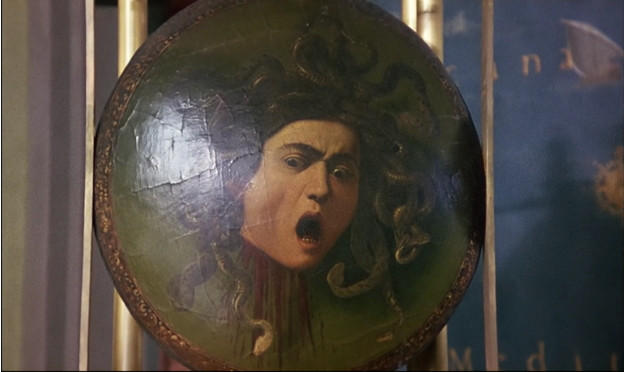
Caravaggio’s Head of Medusa (1597) as seen in The Stendhal Syndrome (1996)
As with many Dario Argento films, The Stendhal Syndrome unfolds along the scary and seductively thin line between possession-by (a work of art, a desire for revenge, violence) and identification-with that which one is possessed/obsessed by. Anna Manni is a police officer visiting Florence in order to catch Alfredo, a serial rapist and murder, whom she meets at the Uffizi Gallery as her Stendhal Syndrome peaks near Head of Medusa.
In the gallery: immersive and haptic shots, camera rolling over the paintings like hands, Birth of Venus, Anna’s stunned face, Medusa’s gaze, giant Baroque pieces with impossible angles, unstable scenes, and visceral affects. Stunned, Anna enters a painting and when painted water becomes actual water, she swims, kisses a fish, and wakes up with a bloody lip on the gallery floor. It’s Bruegel’s Landscape with the Fall of Icarus which first makes her faint as she loses herself entirely, forgetting her name and why she’s there.
In her hotel room, Rembrandt’s The Night Watch comes alive in haptic bursts of audiovisual. In its mutable reflection, Alfredo appears. Alfredo enters Anna’s room through the artwork and, in a moment which epitomizes the film’s logic of breaking-in, Alfredo rapes Anna. As we will see, the painting enables their interaction, acting as a kind of gate. It also sets up an ultra-porous and scrambled zone of Dionysian intoxication as identities and labels (victim and perpetrator; self and other) get mixed-up.
Anna transforms. She cuts her hair, changes the way she dresses, and begins taking boxing lessons. At the suggestion of her therapist, she begins to paint. She creates the same image over and over again, an abstract face with a gaping mouth, dark and wide. Occasionally, these paintings speak to her in garbled moans. Eventually, she kills Alfredo and what appears at first to be a rape revenge film gets quickly deconstructed. It’s not: eye for an eye. But: what is an I? A you? How do they interact, creating and dissolving boundaries and zones? How does art mediate human relationships?
The Stendhal Syndrome, the disease and the film, offer the kind of ravishment without death that Georges Bataille talks about in his essay The Cruel Practice of Art:
…for art, which puts us on the path of complete destruction and suspends us there for a long time, offers us ravishment without death. Of course, this ravishment could be the most inescapable trap—if we manage to attain it. Here or there, we enter into death or return to our little worlds.
During the film’s second half, Anna’s Stendhal Syndrome disappears. There are less artworks, too. Though he’s dead, Alfredo is not gone. Without art, Anna’s experience of Alfredo is head-on, unmediated. She becomes possessed by him and murders those who are closest to her. Caravaggio’s Medusa head is just a head. It is neither living nor dead – shown in a freaky close-up liminal moment – mouth wide open and face contorting – just after Medusa’s been decapitated by Perseus. The scream gets paused before the blood which spews from her neck births something new. Both the shield and the film dilate this ambivalent, open-mouthed in-between.
Transformation, laceration, contagion: The Stendhal Syndrome shows art’s alchemical potential, its ability to unlock horror and de-form (in) the strange arena opened and closed by Medusa’s gaze. Like Caravaggio who protected himself by becoming-Medusa in his rendering of Medusa, Anna becomes a kind of devouring shield through transforming into that which she’s most afraid of, reminiscent of Nietzsche’s warning in Beyond Good and Evil: “Whoever fights monsters should see to it that in the process he does not become a monster.” In the process, Anna becomes an artist, finding complicated immunity through the terrifying transfiguration opened by formlessness.


